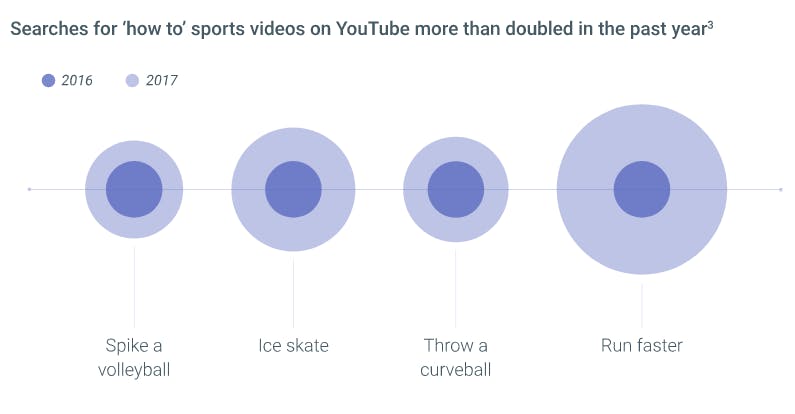But brands that advertise against sporting properties might have bigger reasons to worry: viewership and attendance of live sporting events has been on the decline, and not just in the National Football League (NFL), which has been dealing with politically-charged controversy.
It’s not that sports are less popular. It’s that the way individuals are consuming sports content has changed.
Perhaps the best evidence of that comes in the form of new data Google released based on an analysis of sports content consumption on YouTube.
According to Google, “watchtime of sports ‘highlight’ videos on YouTube grew more than 80% in the past year.” In some sports that figure is even higher. For example, searches for American football highlights nearly doubled on YouTube in the past year.

There was also a 60% jump in the watchtime of sports “interview” videos on YouTube in 2017.
While these statistics don’t mean that individuals aren’t tuning into live sporting events on television or though streaming services – many still are and doing so through multiple screens, sometimes simultaneously – when the live attendance and viewership declines are taken into account, it seems apparent that a growing number of fans are not only time-shifting their viewing of sporting events but opting to limit their consumption to segments of a full broadcast, such as highlights of key moments in a match.
The implications of this shift in behavior are wide-ranging. For example, it could eventually impact the value of broadcast rights and naming rights which, in turn, could have an impact on the value of teams and player compensation packages.
For advertisers, it’s not too early to start thinking about how this shift in consumption behavior will impact their ability to use sports to reach consumers and how their strategies and media buying activities should change. In fact, this is an activity they arguably need to be doing now.
For example, brands might find that advertising against television and digital properties that feature highlight reels offers increasingly more bang for the buck than, say, signage and live broadcast television ads, which for obvious reasons tend to be most expensive.
Brands that have invested in sponsorships should also reconsider how they activate against their sponsorships. Google revealed that searches for “how to” sports videos on YouTube have more than doubled in the past year. A brand that has a relationship with a professional athlete, for instance, could take advantage of this to create how-to content with the athlete instead of yet another traditional ad.

To be sure, changes in consumer behavior will create challenges for brands, especially those that have already made long-term commitments to a sporting property, but for brands that are smart and nimble, the shifts could bring with them many interesting and worthwhile opportunities.

Comments